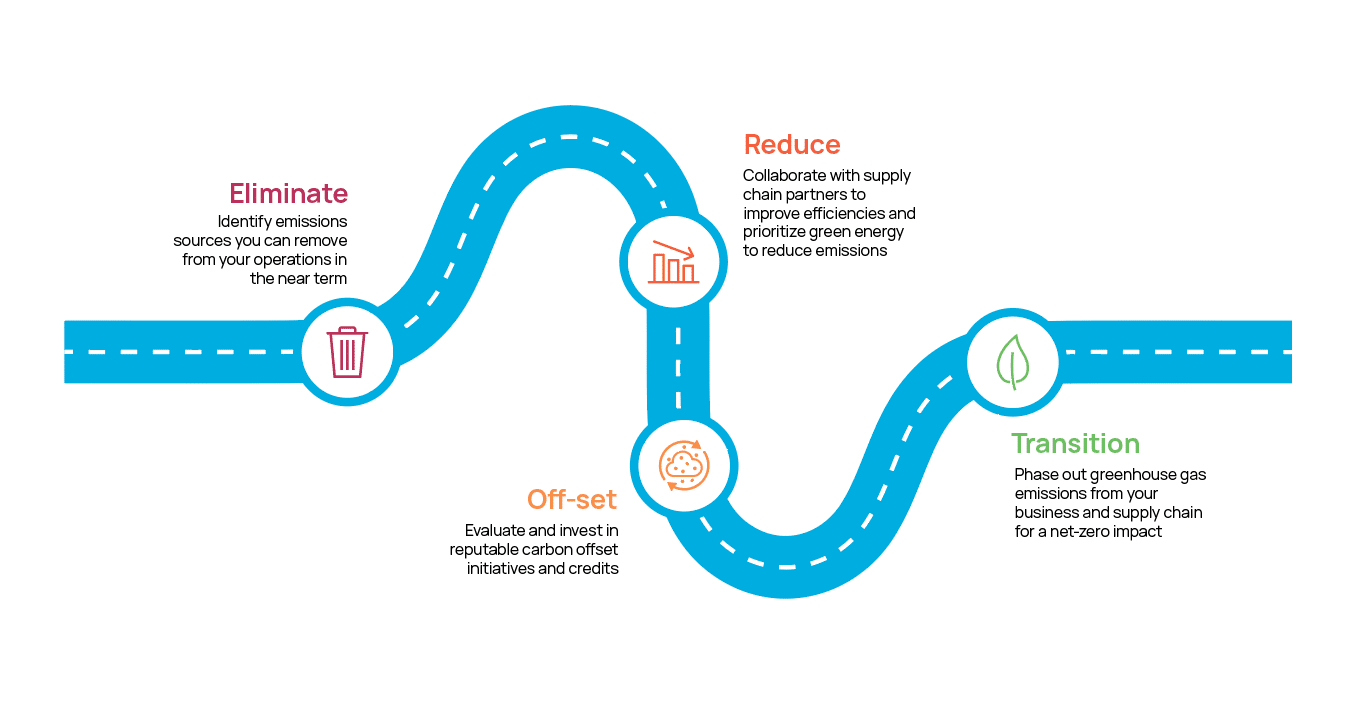The Path to Net Zero
A critical goal in the global effort to mitigate climate change and limit the rise in global temperatures.
When it comes to sustainability, it’s common to hear or read about the phrase ‘path to net zero’. And although it’s used commonly enough, you may not know exactly what that means. Let’s start by defining the term ‘net zero’.
Net Zero
The concept of achieving ‘net zero’ refers to the balance between the amount of greenhouse gases emitted into the atmosphere and the amount removed or offset, resulting in a net emissions level of zero.
An ever-increasing amount of GHGs and carbon in the atmosphere intensifies the global warming effect and causes further planetary disruption via climate change. To keep global warming to no more than 1.5°C – as called for in the Paris Agreement – emissions need to be reduced by 45% by 2030, and reach net zero by 2050.
Carbon Offsetting
Reducing the amount of carbon emissions produced and released into the atmosphere is an easy concept to grasp, but how does an organization increase the amount of GHGs removed from the atmosphere?
By using a concept known as ‘carbon offsetting’. Carbon offsets are actions or projects initiated to remove or reduce the amount of GHG emissions that do not tend to have direct relationships with the entity purchasing them. There is no universal standard for carbon offsets or carbon credits, but most industry leaders agree programs must be:
-Additional (would not occur without the specific sponsorship) -Not overestimated -Permanent -Not claimed by another entity -Not associated with significant environmental or social harm
Companies can buy carbon offsets from organizations and projects that reduce the emission of greenhouse gases (such as renewables for example), thereby investing in them and their technology, and helping to further these ‘green’ projects, organizations, and industries.
Path to Net Zero
As many businesses and organizations are ‘carbon positive’, getting to a net zero state is a stated objective for many, and hence we speak of their ‘path to net zero’ – essentially the set of actions they’re taking to reach this objective.
There are two ways to achieve this – increasing the amount of GHGs removed from the atmosphere, and reducing the amount produced and released into the atmosphere in the first place.
Science-based targets and emissions reduction
An increasingly popular way in which businesses and organizations are reducing their carbon emissions is via science-based targets.
The Science Based Target initiative (SBTi) is a coalition which has developed and launched the world’s first net zero standard, and provides the framework and tools for companies to set science-based net zero targets.
The SBTi independently assesses and approves companies’ targets in line with its strict criteria, and companies can follow a simple five-step process mandated by the SBTi to cut their GHG emissions.
You can discover more about science-based targets and the SBTi here.
The Path to Net Zero

When it comes to your path to net zero and reducing your carbon emissions, our ESG and carbon footprint management software can assist to:
-
- Identify your emissions sources, track the consumption thereof (diesel for example), and calculate your emissions per greenhouse gas
- Provide you with access to a global standard emissions factors database via our in-built calculation engine
- Set emission reduction targets and track your progress in achieving these
Our ESG on Lumina product also includes the following emission factor libraries as established content within our indicator library for any Lumina user.
-
- Greenhouse Gas (GHG) Protocol
- Department for Environment, Food, and Rural Affairs (DEFRA)
- AP-42: Compilation of Air Emissions Factors | US EPA
- Code of Federal Regulations Part 98: Mandatory GHG Reporting






